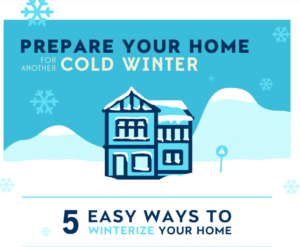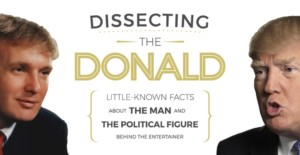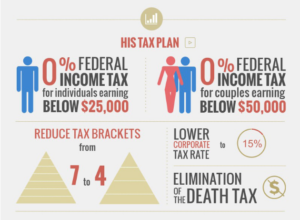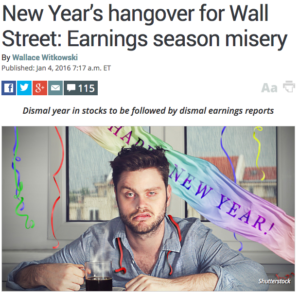Most seasons and holidays are overrun with annoying cliches. By the time a marketer tries to incorporate it into their content, it becomes utterly cringeworthy.
I’m talking about headlines and subject lines like these:
- How Winning a Client is Like a Thanksgiving Dinner
- Christmas Came Early! The Sale You’ve Been Waiting For
Seasonal content like this isn’t very creative, but it also sends a negative message. It’s so obvious you’re just out to make a buck from holiday cheer.
Great seasonal content stands out, conveys emotion, and speaks to your audience. Most brands these days fail to achieve it, but these 5 seasonal content examples are excellent exceptions.
Atlas Obscura and the Creepy Clown Epidemic
A lot of holiday content out there focuses on the actual day, which is where you get the most cliches.
In reality, there are a lot of opportunities to get in the holiday spirit with your content. Atlas Obscura has a “31 Days of Halloween” content section that focuses on all things creepy and Halloween-esque:

In it I found some great Halloween-related seasonal content examples, including a map they created of the creepy clown epidemic:

I like this example because creepy clowns are definitely in the Halloween spirit, but also because they took advantage of a trending topic.
Since the creepy clown sightings began in late August (just in time for Halloween season), the internet’s interest in the topic has grown. Here’s Google Trends search interest for “clown sightings” since March:
The Takeaway?
Be opportunistic. If you want to avoid holiday cliches altogether, jump on something relevant to this holiday to discuss in your content. No two years are the same.
Nerdist and Home Geekonomics
Another great seasonal content example comes from a less traditional holiday: May the 4th (AKA Star Wars day).
Nerdist columnist Jenn Fujikawa wrote Home Geekonomics: May the 4th Be With You last May to mark a very important holiday for nerds around the world.
The article offered tips and craft ideas for your May the 4th Be With You (Star Wars) party, including a ‘Wash Your Hans’ sign for your buffet table, a DIY BB-8 lantern, a DIY Death Star, and more.

Only the most devoted Star Wars fans could dream of actually making these crafts, but you can bet Nerdist fans are among them.
The Takeaway?
Focus on holidays your audience really cares about, and don’t be afraid to branch out. Even if your audience knew nothing about the holiday before, they’ll like the gesture when they read your content.
And it’s actually pretty easy to find an obscure holiday that fits in with your brand. Run a food blog? November 3rd is National Sandwich Day, so make sure you’re on topic!
Allstate’s Winter Storm Safety Tips
A lot of seasonal content you see around winter is materialistic. It’s all about Black Friday, Cyber Monday, Christmas gift ideas, New Years essentials. It’s not creative and very impersonal.
Brands seem to forget that winter is an actual, physical season, not just a series of holidays where they can encourage people to buy stuff. That’s why Allstate’s 5 Easy Ways to Winterize Your Home Infographic is a great seasonal content example:

It’s nothing fancy, but simply offers helpful advice that their audience can actually use, without any underlying sales agenda.
Unlike salsey seasonal content, the infographic suggests that Allstate actually cares about your needs during the winter season. In fact, the whole GoodHands blog gives off that vibe.

The Takeaway?
Seasonal content doesn’t have to be all about the holidays. You can remain secular and actually offer something of value to your audience by focusing on the challenges people face in the season as a whole.
Hindsite Interactive and the Donald Trump Infographic
Winter, spring, summer and fall aren’t the only seasons you can create content for. There’s football season, back-to-school season, Olympic season, and of course — election season.
Here’s a great alternative seasonal content example: Hindsite Interactive created a great Donald Trump infographic to get in the election season spirit.

At this point, there are quite a few Trump infographics out there. But this one was actually published in October 2015, so they got to ride the wave of public interest in the Donald all year with this great seasonal content example.
Hindsite Interactive is actually a website and visual marketing design agency, so the infographic was also an opportunity to showcase their design skills.

The Takeaway?
Seasonal content is inherently ‘on-topic,’ which is why many brands use it as an opportunity to showcase their products or services. As ‘Dissecting the Donald’ demonstrates, there are ways to do this without overtly saying “Hey, buy my stuff!” with your content.
MarketWatch and the New Year’s Hangover
Publishers have a lot of opportunities to tie their content into the New Year. It’s the time of year people are planning to reinvent themselves, so they need plenty of advice (and new products) from you to make it happen.
That’s why I laughed at this seasonal content example from MarketWatch: New Year’s Hangover for Wall Street: Earnings Season Misery.

Just about every other financial publisher out there was targeting New Years with content like:
- How to Close the Sales Year Strong
- 10 Ways to Keep Your Financial New Year’s Resolutions
These topics are helpful, but boring. They all use the same strategy — how to do better, how to be better in 2016.
But not MarketWatch. They took a more realistic approach, and turned a poor earnings season into something comedic in the process.
The Takeaway?
To create seasonal content that stands out from the rest, don’t celebrate a holiday, lament its pain points. People get bored by holiday cheer. Finding a unique take will make people chuckle, nod and click instead of scrolling along.
Make Great Seasonal Content in 2016
The holiday season is already upon us. With it, months of cheezy branded content full of puns and cliches.
You can try to shoehorn your brand into some seasonal topic to generate more publicity. Or you can create seasonal content that doesn’t suck.
Content done the right way, like these 5 seasonal content examples, can add a lot of value to your blog.
Get creative and make it relevant, or avoid annoying everyone and skip this content marketing tactic altogether.
